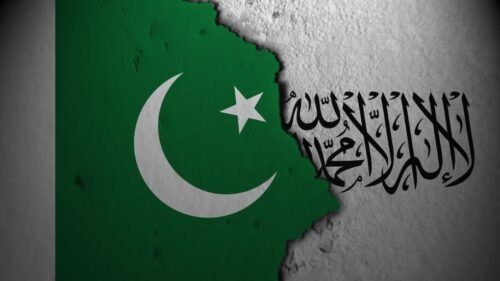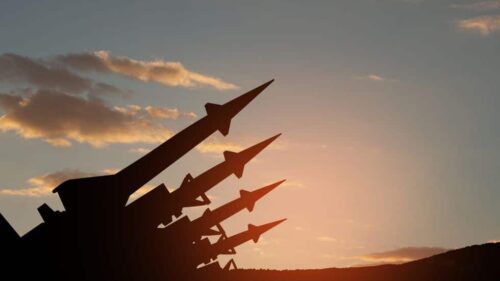The Indo–US relationship saw a significant breakthrough in counterterror cooperation when the US designated The Resistance Force (TRF) as a Foreign Terrorist Organization (FTO). The TRF is a proxy group linked to the Pakistan-based Lashkar-e-Taiba (LeT), which the US and UN have long recognized as a terror group.
Following this, the Monitoring Team of the UN Security Council (UNSC) Sanctions Committee explicitly recorded TRF in its reports for the first time — a move that India has been advocating for since the 2019 Pulwama Attacks. A member state noted in regards to the 2025 Pahalgam terror attack that it “Could not have happened without Lashkar-e-Taiba support, and there’s a relationship between LeT and TRF.” A second member state noted that “the attack was carried out by TRF, which was synonymous with LeT.”
While these are major diplomatic wins for India and help corner Pakistan when it comes to denying its terror-sponsoring activities, it will essentially be business as usual for the latter.
For India, a real win lies in on-ground efforts. As the pattern indicates, a terror designation does little to deter Pakistan-funded terror in Jammu and Kashmir (a northern state in India that shares a contested border with Pakistan). But intelligence-based counterterror operations have proven successful in eliminating groups like the Indian Mujahideen (IM) in the past.
Terror designations offer little immediate security
US designations of Pakistan-backed terrorist outfits have long been viewed as a diplomatic tool India can leverage in international forums, particularly in influencing outcomes such as listings on the Financial Action Task Force (FATF), which is a global money laundering and terror financing watchdog.
However, as transactional diplomacy takes center stage in the global order, these diplomatic maneuvers now hold little deterrent value. The case of the IM — a group formed through the reorganization of the declining Students Islamic Movement of India (SIMI) cadre — illustrates this trend.
The group was a nightmare for the Indian security landscape as IM’s operational behaviour was of maximum terror with minimum identification. The IM’s designation as an FTO by the US came in September 2011, two months after the July 13 Mumbai serial bomb blasts. Yet this did little to deter IM from striking Indian cities: three cases of limited intensity bombing were conducted by IM in eight months in 2013, from the Hyderabad twin blasts to the Patna blasts, resulting in 24 fatalities and around 190 injuries.
The LeT was designated as an FTO in December 2001, but carried out the Akshardham Temple attack within nine months, followed by the 2003 Mumbai serial blasts — demonstrating continued operational capacity.
The US itself has faced serious threats and attacks after terror designations. Take the case of Al-Qaeda, which was designated an FTO by the US in October 1999, but less than two years later carried out one of the deadliest terror attacks of the decade: the September 11 attack (9/11). It was followed by continued strikes, including the USS Cole bombing in 2000 and the Riyadh compound bombings in 2003. Similarly, Al-Qaeda in Iraq (AQI), the precursor to the Islamic State (ISIS), executed a series of hotel bombings targeting Westerners in 2005, shortly after its own FTO designation in 2004.
In the long term, it can be seen that IM faced a strong impact from sanctions. However, despite being a weaker group, they still managed to survive (though in degraded strength) till 2017. With this in mind, it is easy to see how the impact of FTO designations on stronger and well-resourced terror groups like the LeT or Jaish-e-Mohammed remains limited.
Designations disrupt but don’t dismantle
These examples point to a fundamental limitation: the FTO mechanism aims primarily at disruption, not dismantlement. It is most effective against groups with limited resilience and financial dependency on formal networks, and can thus collapse due to disruption. Robust terror organizations tend to endure due to three key structural advantages:
- Safe Havens and Porous Borders: Territories with weak governance, such as parts of Africa or early-2000s Afghanistan, provide physical bases for training, recruitment, and planning. Designation efforts have little effect without the active cooperation of local and national host governments. After 9/11, Al-Qaeda shifted its base to Pakistan’s tribal areas to remain off the radar of US military operations. LeT similarly went underground with the support of Pakistan’s Inter-Services Intelligence (ISI) after the November 26, 2008, attacks (26/11) in India.
- Decentralized Operations: Decentralized and tight, cell-based networks help terror groups build multiple offshoots and use them as front organizations. This allows these groups to operate even if their leadership gets targeted by arrests or FTO sanctions. The LeT used IM and TRF, while Al-Qaeda used its regional branches such as AQI and Al-Qaeda in the Arabian Peninsula (AQAP) to bypass sanctions.
- Alternative Funding Sources: Some non-traditional funding sources are immune to the US’s banking sanctions, allowing terror organizations to procure arms and explosives and send them to safe havens for training through various cross-border networks. The hawala network, charitable fronts, and non-traditional funding from sympathetic donors allow groups to circumvent asset freezes and FTO-sanctioned disruptions. After their designations, Al-Qaeda used hawala networks and Gulf-based donors to finance 9/11, while LeT sustained itself through the “charitable activities” of Jamaat-ud-Dawa (JuD), a front with ISI backing, leading to 26/11.
The benefits of network-centric counterterror strategies
Where designations fell short, coordinated multi-dimensional and intelligence-led strategies focused on dismantlement have yielded better results. This involves a network-centric approach: combining targeted strikes with intelligence-led efforts to degrade networks.
Targeted strikes help in eliminating leadership, and strong intelligence works to identify financial pathways, front organizations, and decentralized cells. This has driven major successes in India’s counterterror landscape, starting with the collapse of the IM.
Beginning in 2012, Indian intelligence worked in close coordination with the US and other countries like Nepal, highlighting a multi-specter counter strategy. They conducted sustained operations that dismantled IM’s operational and financial networks.
Front organizations in the Gulf were identified and sanctioned under the FTO, leading to a collapse of its funding streams. Some serious intelligence work led to the capture of key operatives, including IM’s leader Yasin Bhatkal, as well as Abdul Wahid Siddibapa, who was associated with their financial funding. With the arrest of other key operatives in 2014, IM’s Azamgarh and Pune modules were also brought down. By 2017, the Indian Mujahideen had been effectively dismantled.
TRF and IM: Learning the right lessons
The key operational similarity between LeT’s IM and LeT’s TRF is the use of maximum terror with minimal identification, with a slight difference in operational advancement and method of engagement, which is direct but sophisticated in TRF’s case. The IM overtly and aggressively executes attacks through bombings, but TRF relies more on covert work and sets a limited target with high symbolic value and psychological impact.
The recruitment approach is also quite the same — they radicalize young muslims by exploiting local grievances, communal coloring and political approaches. TRF has intensified this through propaganda via limited tech capabilities, focusing on Kashmiri youth.
Despite being a smaller organization, TRF’s efforts to develop and modernize its operational behavior make it harder to influence through designations and sanctions. Moreover, an additional difficulty with TRF lies in developing a strong and grounded counterterror strategy — not at the operational level, but at the tactical level. Several key factors explain the limited progress so far:
First, network-centric operations have not been able to penetrate TRF’s tight, decentralized cells, likely due to gaps in human intelligence and limited visibility into ground-level dynamics in Jammu and Kashmir.
Second, the group’s operational pattern relies heavily on overground workers and recently radicalized individuals who are not on law enforcement watchlists. This makes early detection and preemption difficult.
Third, TRF has demonstrated quick tactical adaptability. The use of satellite data, secure encrypted communication, coordinated hit-and-run strikes to exhaust and distract government forces, as well as the use of body-cameras and high-end weaponry, show that the outfit focuses not only on sustenance but on advancement — and is actively evolving its methods.
These challenges, while significant, are not insurmountable. Addressing them requires a shift toward more advanced network-centric operations — anchored in the integration of intelligence across domains. This means building intelligence fusion models that combine human intelligence (HUMINT) and open-source intelligence (OSINT) with technical assets such as drone surveillance, cyber forensics, and satellite imaging. Such capabilities must be embedded within a broader multi-spectrum counterterrorism strategy: one that combines targeted operations, search-and-destroy missions, and financial disruption.
TRF’s logistical backbone — particularly its financing through hawala networks and front organizations — can still be targeted in the same manner as the IM was in the early 2010s, ideally in coordination with international partners such as the US.
The dismantling of TRF will depend not on designations or sanctions, but on sustained operational and intelligence recalibration. That will require clear strategic direction — and political will — from the highest echelon in New Delhi and Jammu and Kashmir.
Perhaps the recent Operation Mahadev, which resulted in the elimination of the Pahalgam terror mastermind, is one indication of a gradual movement towards a multi-specter counterterror strategy.
[Yaamini Gupta edited this piece.]
The views expressed in this article are the author’s own and do not necessarily reflect Fair Observer’s editorial policy.
Support Fair Observer
We rely on your support for our independence, diversity and quality.
For more than 10 years, Fair Observer has been free, fair and independent. No billionaire owns us, no advertisers control us. We are a reader-supported nonprofit. Unlike many other publications, we keep our content free for readers regardless of where they live or whether they can afford to pay. We have no paywalls and no ads.
In the post-truth era of fake news, echo chambers and filter bubbles, we publish a plurality of perspectives from around the world. Anyone can publish with us, but everyone goes through a rigorous editorial process. So, you get fact-checked, well-reasoned content instead of noise.
We publish 3,000+ voices from 90+ countries. We also conduct education and training programs
on subjects ranging from digital media and journalism to writing and critical thinking. This
doesn’t come cheap. Servers, editors, trainers and web developers cost
money.
Please consider supporting us on a regular basis as a recurring donor or a
sustaining member.
Will you support FO’s journalism?
We rely on your support for our independence, diversity and quality.









Comment